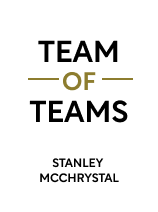

This article is an excerpt from the Shortform book guide to "Team of Teams" by Stanley McChrystal. Shortform has the world's best summaries and analyses of books you should be reading.
Like this article? Sign up for a free trial here .
What is systems thinking? How does systems thinking apply to organizational management?
Systems thinking is a holistic approach to system analysis that focuses on examining the system as a whole by looking into how its constituent parts relate to one another. In systems thinking management, information is shared freely across the organization’s functions to facilitate collaboration.
Keep reading to learn about systems thinking in management.
Systems Thinking in Management
Systems thinking argues that to understand one of a system’s parts, you need to have at least a basic understanding of the system as a whole and how the parts interrelate. For example, doctors need a systems understanding of the body—they can’t treat one body part without an understanding of how it interacts with or is affected by the whole body.
A systems engineering or systems management approach applies this thinking to running organizations. Introduced at NASA in the 1960s, systems thinking management enabled a disjointed organization to work together to create completely new technology to send a man to the moon.
Systems Thinking Management Helped Win the Space Race
In the early 1960s, NASA lagged the Soviet Union in the space race—the Soviets produced the first earth orbiter, launched the first animal into space, conducted the first lunar flyby, and were gearing up to send the first human into space. Meanwhile, NASA’s first unmanned test flight failed. President John F. Kennedy changed the trajectory of NASA in 1962 by pledging that the U.S. would be the first to create rockets capable of sending humans to the moon within 10 years.
To fulfill this vision, NASA needed to scale up the abilities of its effective small research teams to the level of a huge organization encompassing 300,000 people, 20,000 contractors, and 200 universities.
A new associate administrator, George Mueller, realized that NASA’S silo-based structure wouldn’t get the job done. Lack of communication between independently functioning teams was partly to blame for past rocket failures. Meeting the extremely ambitious goal of a moon launch would require radical transparency and information sharing.
Mueller envisioned NASA as a single, unified mind working with shared information. He insisted that managers and engineers work together and communicate daily. Data was displayed in a central control room linked to field centers. He ordered the creation of a “teleservices network” that connected project control rooms to enable data sharing and teleconferences (this was pre-internet). He brought contractors in-house and shared information with them.
In two years, Mueller’s application of systems thinking to management by connecting the parts to the whole through communication and shared information, transformed NASA from a collection of independent research teams to an effective development organization. Within six years, NASA put men on the moon.
In contrast, NASA’s European counterpart ELDO (European Launcher Development Organization) suffered numerous rocket failures, as research teams in the United Kingdom, France, and Germany didn’t communicate and the components they made didn’t work properly together. ELDO disbanded after three years.
The “Need to Know” Fallacy
The interconnected network at NASA used information sharing to create a sense of “shared consciousness” among the different teams. It transformed a once rigid “MECE” organizational structure into a “non-MECE” structure where teams overlapped and communicated.
For example, when the designers met to discuss an engine problem, other teams could listen in on their meeting and offer advice from a different perspective. This communication allowed a multidisciplinary approach to problem-solving.
In contrast to NASA’s information sharing, silo-based organizations like the military have traditionally shared information only on a “need to know” basis. The idea of limiting people’s information grew from Taylor’s factory assembly lines, which were designed around the belief that workers needed to know only their own step in the production process to do their jobs.
This has the effect of keeping people confined to their silos and focused on how they define winning regardless of the organization’s overall interests—like a ballplayer bragging about his batting average while his team loses.
More recently, controlling information has become the default stance in much of the military, partly due to the flood of information and its sensitivity. Systems, security levels, and protocols focus on keeping people from receiving information that managers have determined they don’t need to know.
However, as technology and processes have become more complicated and environments more complex, no commander or manager can know exactly what information will be relevant to people responding on the ground in ever-changing circumstances. To function effectively in this environment, teams must share an understanding of the whole and how the parts of the system work together.

———End of Preview———
Like what you just read? Read the rest of the world's best book summary and analysis of Stanley McChrystal's "Team of Teams" at Shortform .
Here's what you'll find in our full Team of Teams summary :
- How General Stanley McChrystal transformed the U.S. Joint Special Operations Task Force
- What teams that operate well can offer to an organization
- How the team of teams organizational model helped bring down a major Al Qaeda leader






